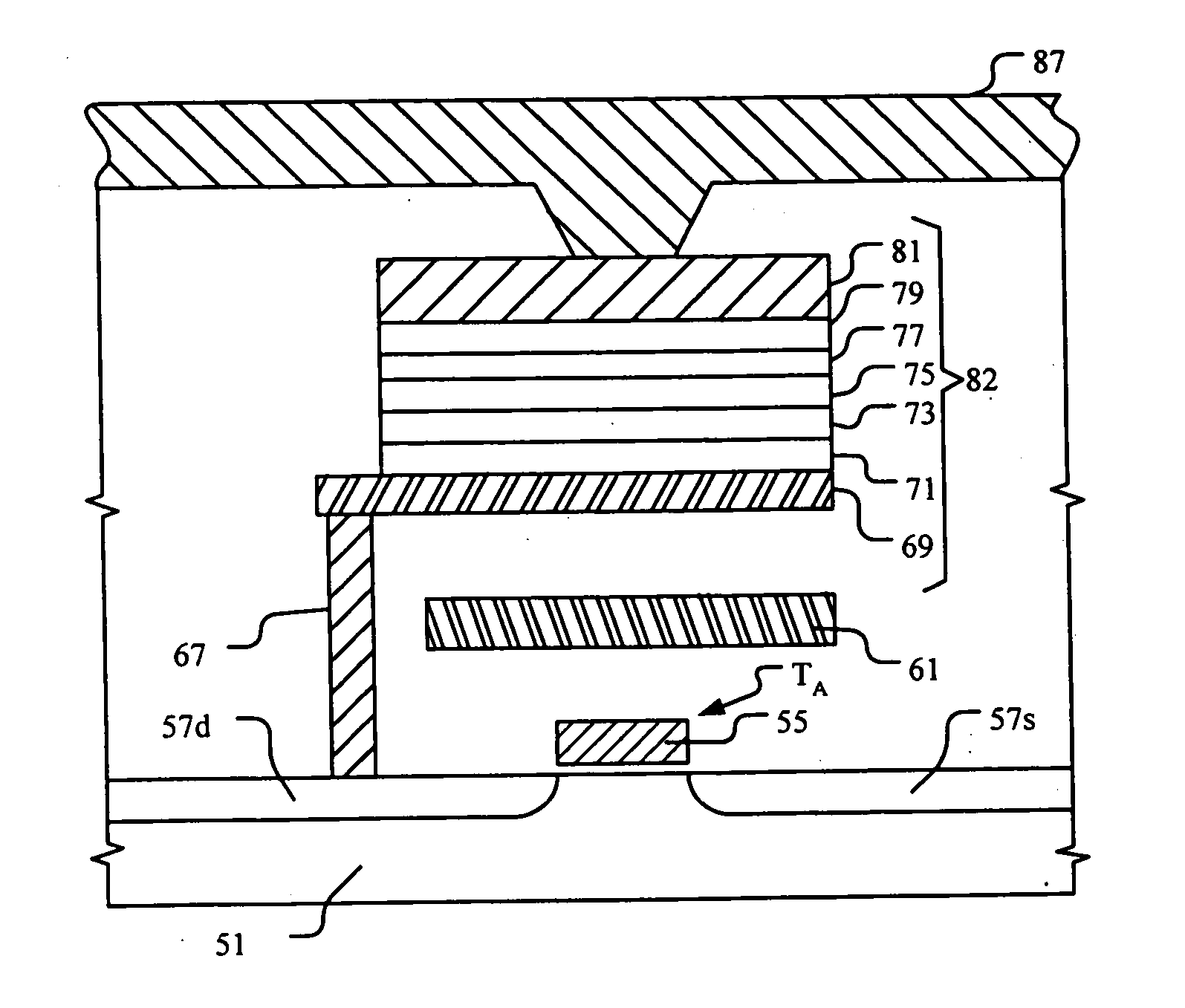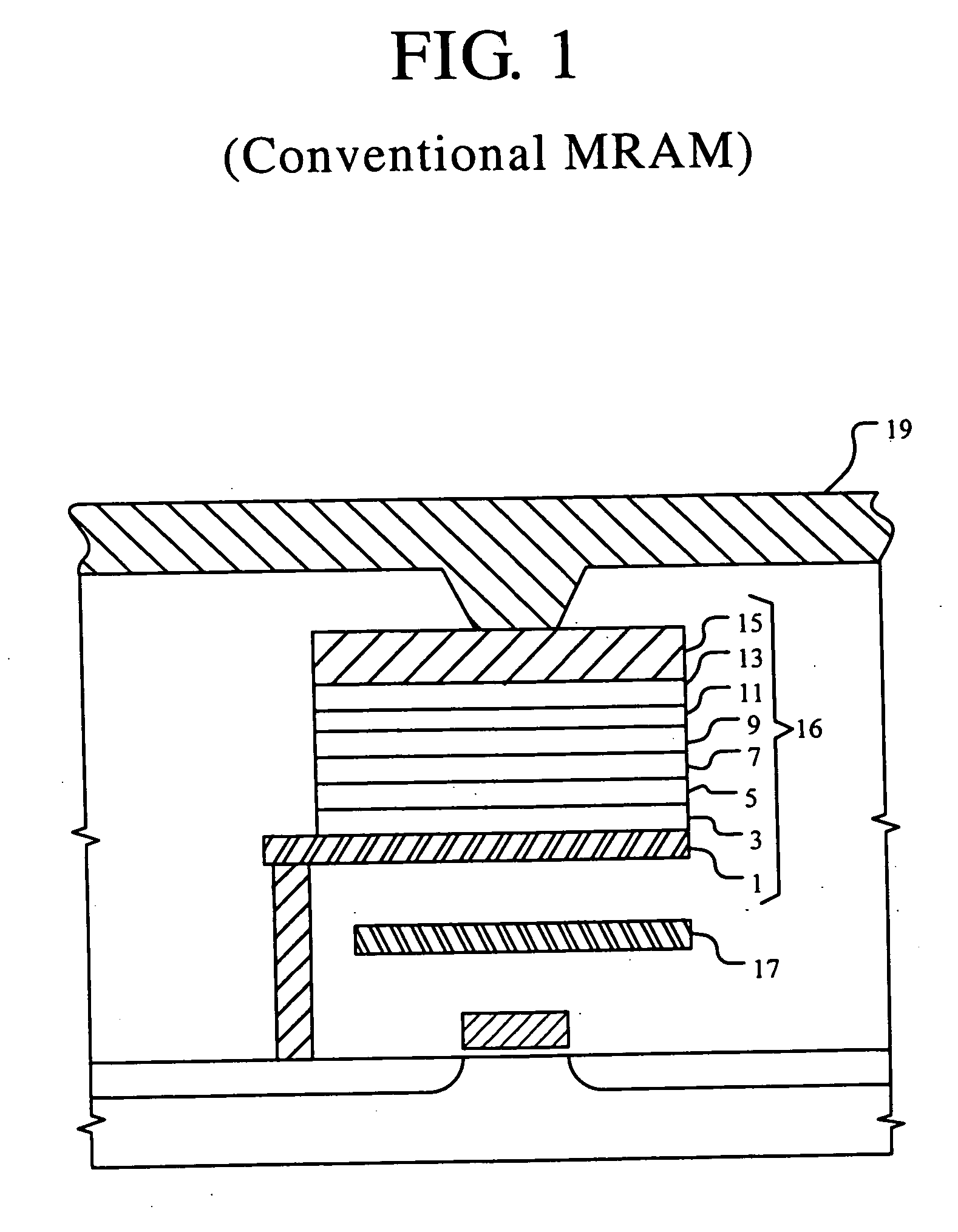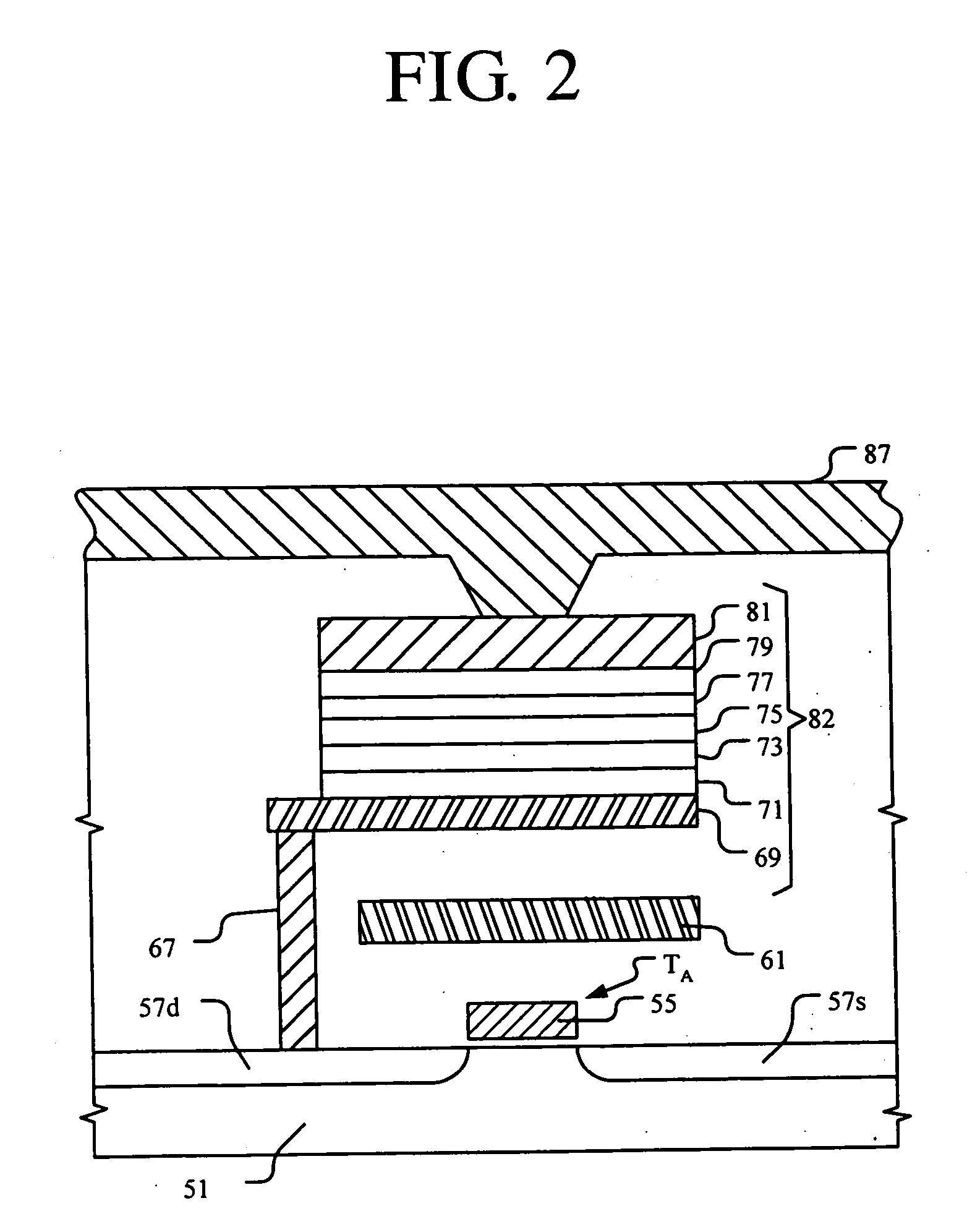Magnetic tunnel junction structures and methods of fabrication
a tunnel junction and magnetic tunnel technology, applied in the field of magnetic tunnel junction structures, can solve the problems of undesired variations in magnetic resistance, uneven thickness of layer layers, and poor surface morphology of aluminum oxide layers, etc., to achieve the effect of reducing surface roughness
- Summary
- Abstract
- Description
- Claims
- Application Information
AI Technical Summary
Benefits of technology
Problems solved by technology
Method used
Image
Examples
Embodiment Construction
[0017]FIG. 2 is a cross-sectional view illustrating a MRAM cell according to an exemplary embodiment of the invention. As illustrated in FIG. 2, an access transistor TA is formed on a region of a semiconductor substrate 51. The access transistor TA includes a source region 57s and a drain region 57d separated by a channel region with a gate electrode 55 disposed over the channel region and configured to act as a word line. A digit line 61 is located over the access transistor TA and is arranged generally parallel to the word line.
[0018] A magnetic tunnel junction (MTJ) structure 82 is disposed above the digit line 61 and generally opposite the access transistor TA. The MTJ structure 82 is a stacked structure including a bottom electrode 69, a pinning layer pattern 71, a pinned layer pattern 73, a tunneling layer pattern 75, a free layer pattern 77, a capping layer pattern 79 and a top electrode 81. The MTJ structure 82 is insulated from the digit line 61, i.e., an insulating materi...
PUM
 Login to View More
Login to View More Abstract
Description
Claims
Application Information
 Login to View More
Login to View More - R&D
- Intellectual Property
- Life Sciences
- Materials
- Tech Scout
- Unparalleled Data Quality
- Higher Quality Content
- 60% Fewer Hallucinations
Browse by: Latest US Patents, China's latest patents, Technical Efficacy Thesaurus, Application Domain, Technology Topic, Popular Technical Reports.
© 2025 PatSnap. All rights reserved.Legal|Privacy policy|Modern Slavery Act Transparency Statement|Sitemap|About US| Contact US: help@patsnap.com



